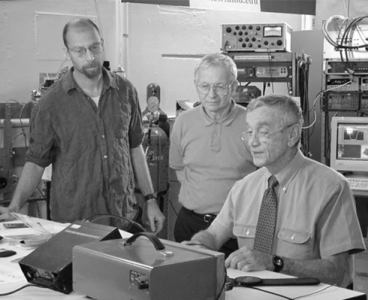- Details
-
Published: Wednesday, March 28 2018 13:39
The American Physical Society (APS) has established a new award honoring alumnus Richard Isaacson (Ph.D., 1967). The Richard A. Isaacson Award in Gravitational-Wave Science will recognize outstanding contributions in gravitational-wave physics, gravitational-wave astrophysics, and the technologies that enable this science.
The award was established with funds donated by Nobel laureates Kip S. Thorne and Rainer Weiss to commemorate Isaacson’s impact in this field. Isaacson’s research contributed to the theory of gravitational wave generation and propagation, and he later oversaw the development of the Laser Interferometer Gravitational-wave Observatory (LIGO) during his career as Program Director of Gravitational Physics at the National Science Foundation (NSF). With theoretical knowledge, experimental sense, patience and perseverance, he worked for years to gain support for LIGO, the largest single enterprise ever undertaken by the NSF.
On September 14, 2015, the twin LIGO observatories succeeded in detecting gravitational waves resulting from the collision of two black holes, and additional discoveries have followed. On August 17, 2017, LIGO and Virgo (a similar project in Europe) detected and localized a collision of neutron stars. A gamma-ray burst was detected two seconds later by NASA’s Fermi Gamma-ray Space Telescope. The source was pinpointed by optical telescopes hours later and studied intensely with many different types of instruments around the world in a historic “multi-messenger” astronomy campaign.
Isaacson obtained his doctorate under the direction of Professor Emeritus Charles Misner, and held appointments at Wright-Patterson Air Force Base and the Illinois Institute of Technology before joining the NSF. He received the Department of Physics’ Distinguished Alumnus Award in 2014.
The APS Division of Gravitational Physics (DGRAV) sponsored the creation of the new award. DGRAV grew from the Topical Group in Gravitation, which was established in 1995 through the efforts of Beverly K. Berger (Ph.D., 1972), another of Misner’s graduate students. UMD Physics Professor Peter Shawhan currently serves as Chair of DGRAV.
The CMNS story, The Chirps Heard Round the World, describes the University of Maryland’s contributions to gravitational wave science. The short documentary film Mirrors That Hang on Glass Threads illuminates the scale and complexity of the LIGO detector, while LIGO Detection tells the story of the September 2015 event in the words of many LIGO scientists.
=====
The 2021 awardee is alumna Beverly K. Berger: https://umdphysics.umd.edu/about-us/news/department-news/1653-berger-isaacson.html






